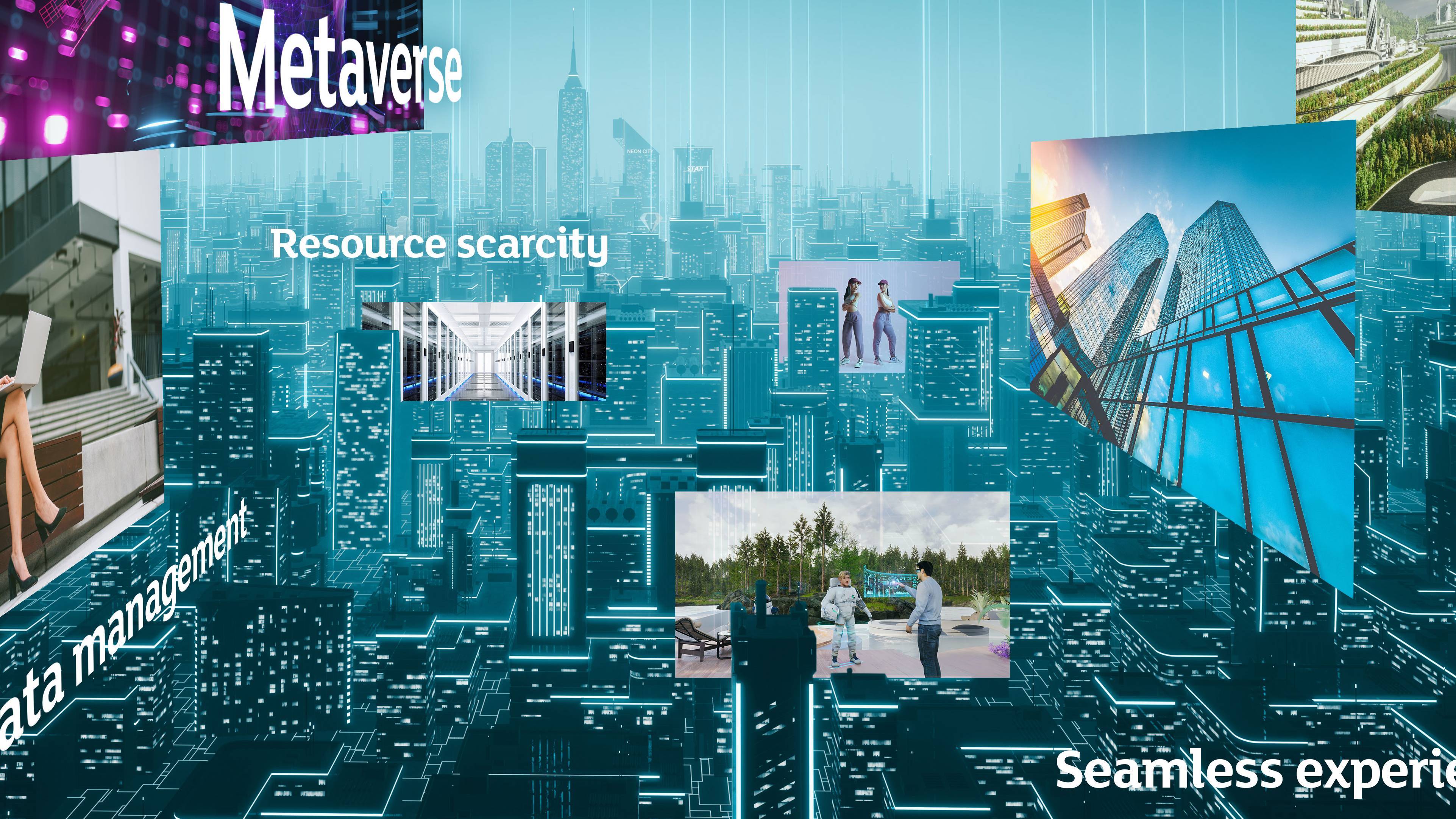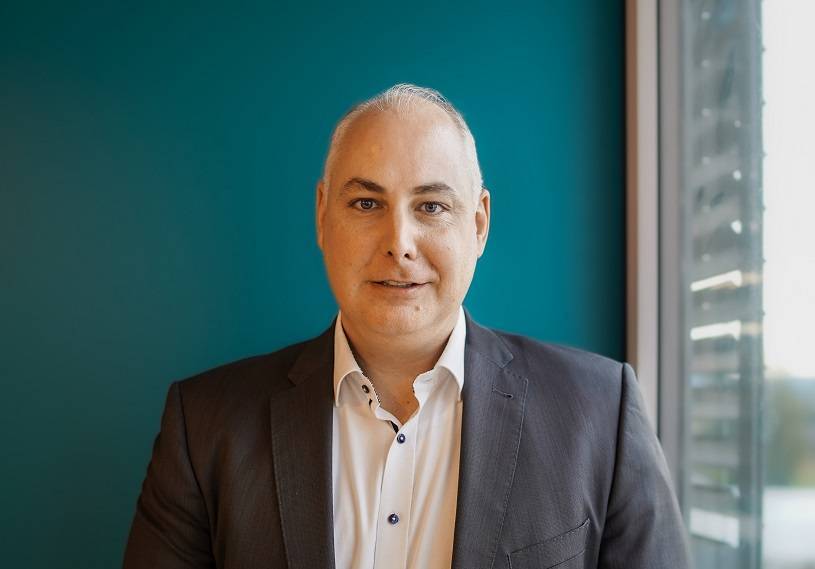
Real estate: new worlds are opening up
Virtual spaces are becoming increasingly real. In the metaverse and even today in many computer games, real estate can be purchased as “virtual estate” (like with non-fungible tokens (NFT) in art). People make payments in cryptocurrencies.
If the metaverse ever establishes itself in everyday life, we can expect to see rows of pop-ups for digital 3D person measurements appearing in the analog, real world. They will ensure that our physical likeness – optimized as desired – really does come across as real in the form of an avatar in the digital space. We’ll be buying digital clothes, shoes, accessories, tools, and tokens from (luxury brand) shops in the metaverse.
We’re not there yet, but we’re getting closer.
New technologies are opening up new strategies, ideas, and ways of thinking, even in areas that affect the real world. One of these can be seen in is site, spatial and urban planning with aspects such as design, densification, networking, supply and disposal, mobility, and social revitalization. The city is now regarded as much more than just a concentrated collection of buildings, streets, and sidewalks, but rather as a living organism where everything is interconnected. It’s no longer just about smart buildings, but smart (high-tech) cities: smart cities with preferably intelligent, life-friendly, and sustainable solutions. In the future, decisions on urban development will increasingly be made using walk-in 3D simulations: in meeting rooms with presentations and conferences where you’ll send your digital image as an avatar.
One day, wearing trendy or maybe not so trendy glasses, we’ll be able to walk our streets and combine existing buildings with those yet to be built: in a seamless transition from real to virtual, you’ll discover the city of tomorrow and see the future already in the pipeline.
Data is worth its weight in gold. |
Data management as a success factor
It all comes down to information technology tools, algorithms, communication channels, terminals, and, ultimately, data. Data is the raw material of the digital world. Today, no building can be built, secured, and operated without digital data. Houses and flats cannot be marketed, sold, or paid for. Traffic management systems cannot be controlled and the Internet of Things remains a pipe dream. It’s impossible to reach the potential customer base, let alone inspire it. Nothing works without data. Everybody knows that. But what many fail to recognize is that technological development is more advanced than we think. But if you stay alert and adapt your data management at an early stage, there are new opportunities to be discovered.
Backlog
However, the way in which data is handled appears to be sub-optimal in many administrative and economic sectors. This is partly because the infrastructure appears to be working well and partly because the largely significant investment needs to be amortized. If real estate companies, architecture offices, or construction firms are still operating in-house data centers or – depending on the size of the company – just a few servers of their own for their IT requirements, there is likely a need for action. Then, at the very least, there is a need for some consideration in terms of data security, availability, timeliness, connectivity, and responsibility towards staff and customers – imagine the consequences of even a brief IT interruption or loss of data in a project.
Does your in-house data center no longer meet all requirements? |
Data is worth its weight in gold. But the way we handle it is also crucial.
Modern and future-proof data management is challenging. Technologies are constantly evolving. Hardware and software are becoming more and more powerful and require constant updates. Data volumes are growing at an exponential rate.
Specialists are needed to meet these demands. But there is an extreme shortage of IT specialists, with no relief in sight. This is the first point that causes concern for many.
The second point relates to infrastructure: It’s no secret that the “machinery” is already out of date once installed and therefore needs to be upgraded and updated on a regular basis. Operating in-house data centers is energy-intensive and dependent on external suppliers and factors. Expensive redundancy and energy backup systems are therefore a necessity for security of supply. It is becoming increasingly difficult to strike a balance between benefits and costs. We need a new perspective on the CapEx and OpEx concept.
The third point concerns sustainability, resource scarcity, and climate change. Operating server rooms and data centers in an efficient, secure, and ecologically acceptable manner is as elaborate as it is costly. Space requirements are high and space is a precious commodity. Operating costs and operational reliability are becoming increasingly unpredictable, especially given the scarcity of resources. Overall, the secure operation of company server systems or data centers is making it entirely unattractive for small and large companies, both from an economical and ecological standpoint.
You are looking for a future-oriented housing? |
Future-proof solutions are needed.
Companies first need to decide whether they want to outsource data infrastructure and data management. Then they have to check the market to see which offers and providers best meet their requirements. Performance data in terms of security, availability, efficiency, connectivity, sustainability and, – increasingly relevant today – location in Switzerland is one of the most important things to consider when choosing a provider.
The Zurich Metro Campus along with all of Green’s other data centers are regarded as some of the most modern and energy-efficient in Switzerland. The range of services offered is vast and suitable for companies and institutions of all types and sizes – for government and economic policy, for profit, and non-profit.
Challenging but rewarding: the path to the digital ecosystem
From your own rack with your own servers to hybrid solutions from the Green Ecosystem and a direct connection to the public cloud, the possibilities are endless both in terms of what’s feasible today and going forward. At first glance, the multitude of potential combinations may be a little overwhelming to many. The journey from an in-house solution to an external solution is certainly challenging. But it’s worth it. The result will make your digital future fundamentally easier.

Three questions for Roger Süess, Green CEO
What trends do you expect to see in digitalization?
Roger Süess: I can’t give you just one answer, but I do see two trends in the real estate industry: the intelligent application of IoT and the use of digital twins, which are also visible in the metaverse. The development of the metaverse will proceed at a faster rate than we think today. Both trends are fast approaching with a huge volume of data and extreme demands on infrastructure. They’ll first appear in niches and will barely be noticeable, but then you’ll run the risk of missing out if you aren’t ready in time.
How do you view the development of IT infrastructure in Switzerland?
Many data centers are still located in urban areas, or in other words, where space is scarce and expensive. For economic and environmental reasons, it would be much better to relocate these infrastructures to the periphery, where their potential can truly be exploited. Heating networks and circular ecosystems can create a symbiosis to the benefit of both.
How can companies prepare for this?
The primary aim is to fundamentally rethink your IT infrastructure so that it can meet the demands of the future. External data centers are not only more economical, secure, and sustainable, but also represent the gateway to the future thanks to their access to all clouds.
More topics worth reading:
Data Center Outsourcing
Replacing your own server rooms with sustainable data centers is an investment in the future.

Best-in-Class Data Center
Sustainable from the architecture to the cooling concept to the use of waste heat. This is our new Metro Campus Zurich.

Journey to the Cloud
Smart, hybrid and tailored to your needs, we support you on the Journey to the Cloud.
